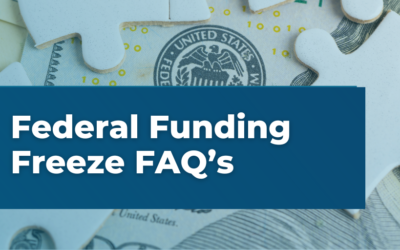Capital campaigns are transformative for nonprofits, enabling them to reach their goals by significantly expanding service capacity and impact. These pivotal endeavors, aimed at achieving ambitious goals such as constructing facilities or launching new programs, require meticulous planning, leadership, and strategic execution. Recognizing their challenges, we’ve designed the “Capital Campaign Toolkit” specifically for nonprofit executive directors and CEOs.
This guide makes the process easier. It provides a step-by-step method for gathering the necessary resources for a lasting effect. We aim to help you confidently approach your capital campaign and ensure your nonprofit’s goals become realities.
Section 1: Preparing for Your Capital Campaign
Understanding Capital Campaigns
Capital campaigns are specialized fundraising efforts for nonprofit organizations that raise large amounts of money to achieve a specific goal. Unlike regular fundraising activities, these campaigns aim to fund major projects that can significantly advance a nonprofit’s mission. They require more planning, commitment, and support from the organization and its donors.
Assessing Readiness and Setting Goals
Assessing readiness and setting goals ensures your nonprofit has the staff and donor base needed for a significant fundraising effort. You must also set clear, achievable goals that match your mission and have a deadline. A good goal guides your campaign, inspires your team, and shows donors why it matters.
Building Your Team
A successful capital campaign relies on a strong, dedicated team. This team should include:
- Leadership: Executive directors, board members, or capital campaign consultants who can provide strategic direction and mobilize high-level support.
- Campaign Manager: An individual responsible for managing the campaign daily to ensure milestones are met.
- Fundraising Staff: Team members who execute fundraising strategies, manage donor communications, and secure gifts.
- Volunteers: Committed individuals who can support various campaign tasks, from organizing events to reaching out to potential donors.
The right team will embody various skills, from strategic thinking and project management to communication and fundraising expertise. Leadership at every level is crucial; your leaders guide the campaign and inspire and rally others around the cause.
After this phase, your nonprofit will be ready to start a focused and successful capital campaign with clear goals.
Section 2: Crafting Your Case for Support
Convincing prospective donors to see the vision and reach your goals through their contributions requires a compelling case. It should identify the purpose and urgency of your project and connect with potential donors emotionally, motivating them to contribute. Here’s how to structure your case for support with a focus on clarity, emotion, and strategic communication:
1. Define Your Vision and Impact
- Purpose of the Campaign: Explain your goals like building facilities or starting new programs, and show how they fit your mission.
- Long-Term Impact: Share how reaching these goals will help your community and advance your mission.
2. Utilize Storytelling
- Personal Stories: Share real-life stories of individuals or communities your organization has impacted. Highlight challenges and potential transformations.
- Emotional Connection: Use stories to link your campaign directly with donors to make the need for support feel personal and urgent.
3. Detail Needs and Outcomes
- Financial Targets and Allocation: Transparently present your campaign’s financial goals and provide a breakdown of how funds will be used.
- Measurable Success Indicators: Clearly outline success, offering specific outcomes donations will help achieve.
4. Engage and Mobilize Donors
- Invitation to Participate: Pitch donations as an opportunity for donors to be part of a significant community journey.
- Evidence of Past Success: Highlight your organization’s track record of fulfilling its promises and creating impact, reinforcing donor confidence in your ability to achieve campaign goals.
5. Highlighting the Urgency
- Immediate Needs: Emphasize why the campaign is urgent and why contributions are needed now, creating a sense of timely significance.
- Call to Action: Include a strong, clear call to action that encourages potential donors to take the next step and contribute to the campaign.
Your support case is more than just a document—it’s a narrative that brings your campaign to life. When you describe your goals, share impactful stories, and share what you’ll achieve, you draw in potential donors effectively. This method keeps your audience interested and motivates them to support your vision, helping make it a reality.
Section 3: Planning and Strategy
Careful planning and crafting a detailed capital campaign plan during the planning phase are essential steps toward a successful campaign. This section outlines key components and steps in a list format to ensure clarity and ease of execution.
1. Creating a Detailed Campaign Plan
- Timeline: Establish a clear timeline for your campaign, including major milestones, to keep efforts on track.
- Budget: Develop a detailed budget that accounts for all potential expenses and revenues, ensuring realistic and attainable financial goals.
- Roles and Responsibilities: Clearly define roles and responsibilities for team members to ensure efficient execution and accountability.
- Conduct a Feasibility Study: Conduct a thorough review to see if your organization is ready and potential donors are interested.
2. Donor Engagement and Segmentation
- Identify Potential Donors: Create a list of potential donors, including individuals, corporations, and foundations, who can give.
- Segment Your Audience: To tailor your approach, divide your potential donors into segments based on factors like giving capacity, history with your organization, and personal interests.
3. Personalized Ask Strategies
- Major Donors: Develop personalized strategies for approaching major donors, including one-on-one meetings and customized proposals.
- Broader Community Engagement: To ensure wide support, plan to engage the broader community through events, online campaigns, and public appeals.
4. Setting Measurable Objectives
- Fundraising Goals: Set specific, measurable fundraising goals for different campaign stages.
- Engagement Targets: Establish clear targets for donor engagement, such as the number of new donors to acquire or engagement events to host.
5. Utilizing Technology and Tools
- Fundraising Software: Implement fundraising and donor management software to track donations, manage donor relationships, and analyze campaign performance.
- Communication Tools: Leverage email marketing, social media, and other digital tools to communicate effectively with different segments of your donor base.
6. Regular Review and Adaptation
- Monitor Progress: Regularly review campaign progress against your goals and objectives, using data to make informed decisions.
- Be Prepared to Pivot: Stay flexible and be prepared to adjust your strategies based on what is or isn’t working.
A well-planned and strategically executed capital campaign sets the foundation for achieving your fundraising goals. You can ensure the success of your campaign by carefully crafting your campaign plan, engaging donors, and being prepared to adapt. Remember, thorough preparation, strategic thinking, and ongoing evaluation are key to navigating the complexities of a capital campaign and driving it toward success.
Section 4: Marketing and Communications
Creating and following a detailed marketing plan ensures potential donors know and care about your cause, leading to more effective fundraising events. This section offers clear, step-by-step advice on marketing and communication to help you reach your goals.
1. Develop a Comprehensive Marketing Strategy
- Target Audience Identification: Clearly define who your marketing efforts will target, including potential donors, community members, and other stakeholders.
- Key Messaging: Craft compelling messages highlighting the campaign’s importance, the impact of donations, and the urgency of meeting campaign goals.
2. Choose the Right Communication Channels
- Digital Platforms: Utilize email, social media, and your organization’s website to reach a broad audience efficiently.
- Traditional Media: Leverage press releases, direct mail, and community events to engage local supporters and stakeholders.
3. Create Engaging Content
- Storytelling: Share stories of individuals or communities who will benefit from the campaign to create emotional connections and illustrate the impact of contributions.
- Visuals and Videos: Use photos, infographics, and videos to make a stronger case for support and engage your audience more effectively.
4. Plan for Key Campaign Milestones
- Launch and Major Updates: Strategize communications for your campaign’s launch and major updates, ensuring consistent engagement with your audience.
- Celebrating Successes: Share milestones and successes throughout the campaign to maintain momentum and encourage further support.
5. Ensure Consistency Across All Communications
- Brand Alignment: Ensure all marketing and communication materials align with your organization’s brand to ensure coherence and trust.
- Message Consistency: To reinforce your narrative and campaign goals, keep your campaign’s key messages consistent across all channels.
6. Measure and Adapt Your Strategies
- Analytics and Feedback: Use analytics tools to track the performance of digital campaigns and gather feedback from your audience for real-time insights.
- Adaptation: Be prepared to adjust your strategies based on the data regarding the most effective ways to engage your audience.
A strategic approach to marketing and communications is critical for the success of your capital campaign. By developing a cohesive strategy, choosing the right channels, and creating content that resonates with your audience, you can effectively raise awareness and generate support for your campaign. Remember, the key is engaging, informing, and inspiring action among your potential donors and the broader community, turning your vision into a shared goal many are committed to achieving.
Section 5: Execution, Monitoring, and Adaptation
Successfully launching a capital campaign and achieving its milestones requires efficient execution, diligent monitoring, and adapting strategies based on ongoing analysis. Here’s a streamlined overview:
1. Execute Efficiently
- Kick-Off: Start with a compelling launch to build momentum.
- Stick to the Plan: Adhere to your outlined plan and timeline.
2. Monitor Progress
- Use Tools: Implement tracking tools for real-time progress assessment.
- Communicate: Provide regular updates to keep the team and donors informed.
3. Adapt Strategies
- Evaluate Data: Regularly review data to discern what’s working.
- Adjust: Be prepared to tweak strategies based on performance insights.
4. Maintain Engagement
- Donor Communication: Keep donors engaged with frequent updates.
- Express Gratitude: Thank donors for their support of a successful campaign
A successful capital campaign is dynamic, blending disciplined execution with the flexibility to adapt. Regular evaluation and communication are key to navigating challenges and ensuring your campaign remains on track toward its goals.
Section 6: Celebrating Success and Post-Campaign Evaluation
Closing a capital campaign effectively involves recognition and reflection. This section guides you through the essential steps succinctly.
1. Celebrate Achievements
- Thank You Event: Host a simple event to thank everyone involved, highlighting key successes.
- Public Recognition: Announce achievements and express gratitude across your communication channels.
2. Post-Campaign Evaluation
- Performance Analysis: Review financial outcomes and qualitative feedback to evaluate the campaign’s success.
- Feedback Collection: Seek insights from team members and donors for a well-rounded view.
3. Lessons Learned
- Strengths and Weaknesses: Identify what worked and what didn’t for future improvement.
- Compile Best Practices: Document effective strategies and tactics.
4. Future Planning
- Build on Success: Utilize campaign momentum for ongoing efforts.
- Maintain Relationships: Continue engaging donors to strengthen long-term support.
The end of a capital campaign is a moment for both celebration and strategic reflection. Recognizing achievements and learning from the experience lays the groundwork for future success and growth.
Conclusion
Running a successful capital campaign is tough but fulfilling. From prep work to execution, checking progress, and celebrating success, every step needs hard work, smart planning, and adaptability. When you achieve your goal, its success shows the value of planning, effective action, and teamwork between your staff and supporters.
Remember, the success of a capital campaign extends beyond the funds raised; it’s about strengthening your organization’s foundation and enhancing its capacity to serve. We encourage you to seek further assistance or discuss with professionals like Velu for deeper insights and guidance. Together, let’s turn visionary goals into tangible realities, creating lasting change in the communities we serve.





